A blog on War gaming in North-eastern North America from 1670-1815, the life of an ex EFL instructor, a family man formerly in Japan and now in Canada , a camper, a reenactor, a drummer, and all round crazy but home Nova Scotian. Having taught for an extended period my career is now in private security.
Wednesday 26 February 2014
Battlefield Britain - Naseby
Another pike and shot battle from the Snow's BBC series. This is something my son and I will have to see about wargamming this battle.
Battlefield Britain - Boyne
I can still share videos I like however. This is one of the Snow's BBC Battlefield Britain series.
Too bad that this battle has still so many bad feelings.
With my new copy of Duty and Glory, I'll have to see about wargamming this.
Too bad that this battle has still so many bad feelings.
With my new copy of Duty and Glory, I'll have to see about wargamming this.
More technical blues
I'm an idiot! I somehow erased the ability on my smartphone, an android system, to upload videos to my youtube account. I'll have to go back to the shop to get the Japanese version of your an idiot and I'll help you but it will cost you.
Bloody nunanice
Bloody nunanice
Sunday 23 February 2014
Osprey Publishing - Dunbar 1650
Osprey Publishing - Dunbar 1650
The preview of this text was intriguing for me. As well, I had a bit of a Scots army for my ECW force.
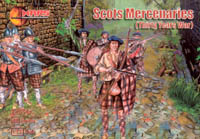 , all pictures from plasticsoldierreview
, all pictures from plasticsoldierreview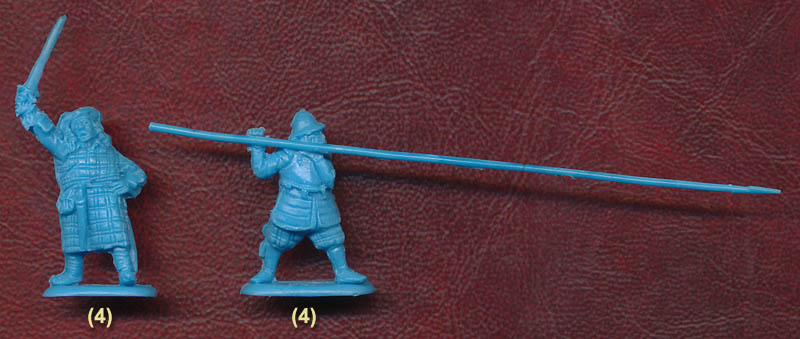

The preview of this text was intriguing for me. As well, I had a bit of a Scots army for my ECW force.
 , all pictures from plasticsoldierreview
, all pictures from plasticsoldierreview

Osprey Publishing - Soldiers of the English Civil War (1)
Osprey Publishing - Soldiers of the English Civil War (1)
I bought this volume at a foreign book shop in South Korea.
I have used the text and color plates to build my own ECW army
(all shots from plasticsoldierreview)
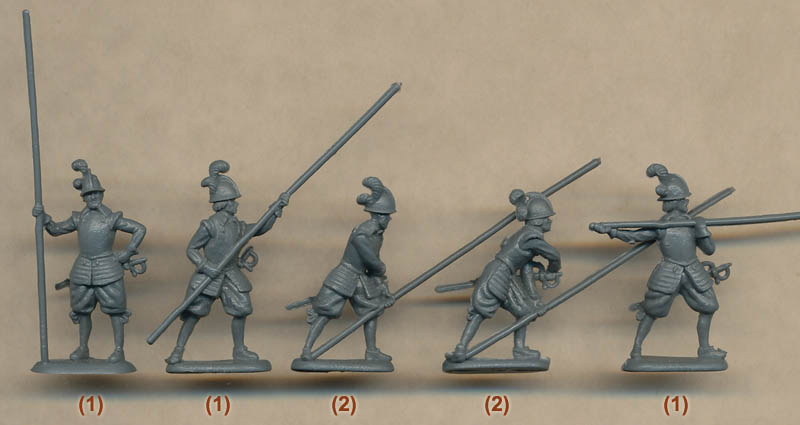
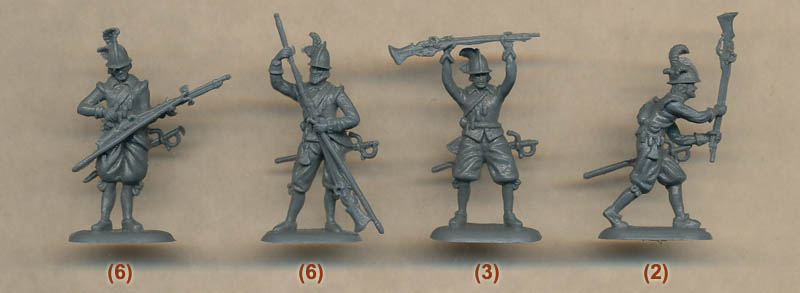
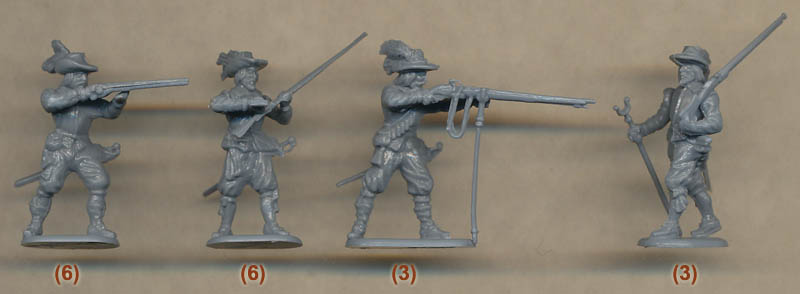
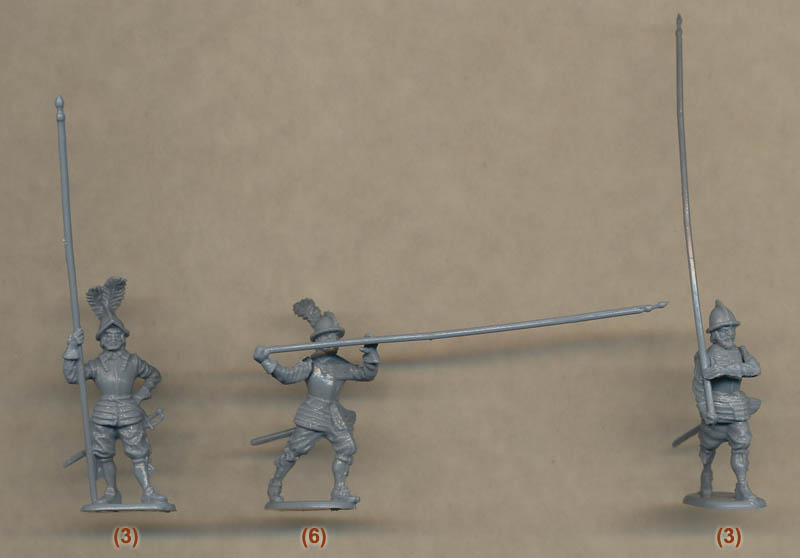
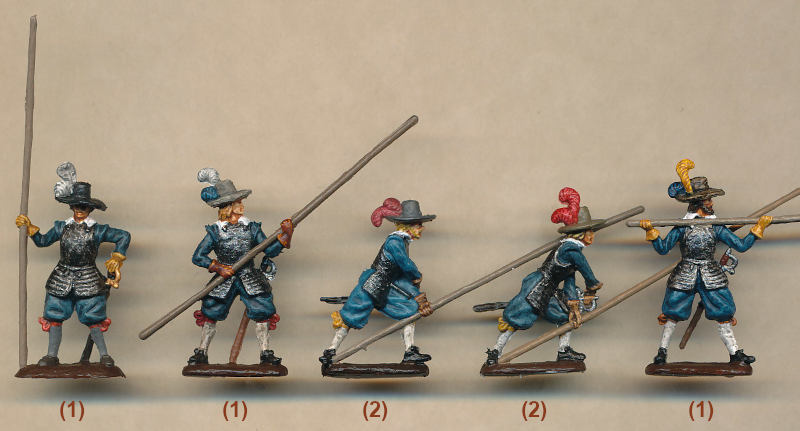
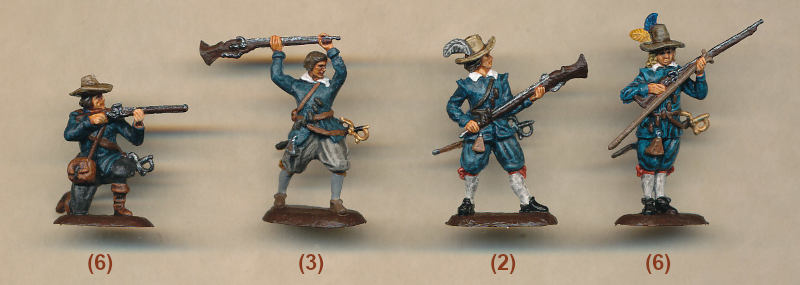
I bought this volume at a foreign book shop in South Korea.
I have used the text and color plates to build my own ECW army
(all shots from plasticsoldierreview)






Aztec assault on Tarascans 1478
As the video shows, the Aztecs flanked the Tarascan position in their hill fort, while the Aztec right crosssed the river and drew the Tarascans out of the jungle. Their archers were able to cut down the Aztecs. Once the Aztecs had cleared the hill fort, the Tarascans tried to push them out with charges, but were in turn cut down by Aztec slingers and archers. While the Tarascans tried to push out the Aztecs, they in turn pushed on the Tarascan left. This position then crumbled. However, in close quarters combat, the Aztec third in command was killed. The Aztecs were not fazzed and kept up their assault. Eventually by a hammer and anvil approach, the Taracans were pushed into their secondary position which can just be seen on the left. The Aztecs pushed in. They were then reduced to only their archers and slingers, then the Taracans were cut down by the arrows. With just their chief left, he was taken back as a war trophy to become the latest sacrafice to the sun god.
The Taracans were made up of Airfix Indians, Revell Indians while the Aztecs were from the Revell range.
Saturday 22 February 2014
Osprey Publishing - Pirate: The Golden Age
Osprey Publishing - Pirate: The Golden Age
Another era my son and I enjoy is the piracy in the early 18th century. He has some pirate play sets which I hope to borrow some kit to do some pirate raids. There were some on Nova Scotia in this period.
Another era my son and I enjoy is the piracy in the early 18th century. He has some pirate play sets which I hope to borrow some kit to do some pirate raids. There were some on Nova Scotia in this period.
Osprey Publishing - Duty and Glory
Osprey Publishing - Duty and Glory
One of my latest purchases. I'm waiting for it to arrive in the mail. I'm hoping for some inspiration for games in this period. My son enjoys pike and shot figures, and I've always had an interest in late 17th century, early 18th century conflicts with a North American feel to them.
One of my latest purchases. I'm waiting for it to arrive in the mail. I'm hoping for some inspiration for games in this period. My son enjoys pike and shot figures, and I've always had an interest in late 17th century, early 18th century conflicts with a North American feel to them.
I'm having some problems attaching pictures
Recently, I have been unable to upload pictures to my blogs. I'm not sure is this is my technical inabilities, or if blogger is giving me grief.
 (I have been able to click and paste) But it is making me go squirrely!
(I have been able to click and paste) But it is making me go squirrely!
Thursday 13 February 2014
Osprey Publishing - American Colonial Ranger
Osprey Publishing - American Colonial Ranger
American colonial militia units had to learn how to fight the French and Amerindians in the woods of the New England frontier. They needed to use field craft, their hunting skills, and to think like their enemy.
This volume covers most of the New England and New York frontier, but also mentions a bit of their activities in the sieges of Louisbourg, Quebec and Cuba.
 some shots of a Colonial ranger reenactment group, if anyone knows of the group, please let me know.
some shots of a Colonial ranger reenactment group, if anyone knows of the group, please let me know.
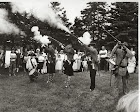
American colonial militia units had to learn how to fight the French and Amerindians in the woods of the New England frontier. They needed to use field craft, their hunting skills, and to think like their enemy.
This volume covers most of the New England and New York frontier, but also mentions a bit of their activities in the sieges of Louisbourg, Quebec and Cuba.

Osprey Publishing - British Light Infantryman of the Seven Years' War
Osprey Publishing - British Light Infantryman of the Seven Years' War
This book is a good study of how Lord Howe's inspiration of beating the French at their own game, helped enable the British victory over the French in North America.
Howe, understood that to beat the French, the Anglo-Americans needed to use the same tactics, but the British also understood that they needed the discipline of a regular soldier to get the job done.
It would take the American Revolution to convince the British Army to keep light infantry companies.
This book is a good study of how Lord Howe's inspiration of beating the French at their own game, helped enable the British victory over the French in North America.
Howe, understood that to beat the French, the Anglo-Americans needed to use the same tactics, but the British also understood that they needed the discipline of a regular soldier to get the job done.
It would take the American Revolution to convince the British Army to keep light infantry companies.
Sunday 9 February 2014
Osprey Publishing - Frederick the Great’s Allies 1756–63
Osprey Publishing - Frederick the Great’s Allies 1756–63
This volume closes out todays postings on Osprey reference books. Prussian allies in their war against the Austrians and French, were a coaliation of minor German states which were paid for by the British government.
As well, the British emphasis of winning the war in the French colonies comes clear when it shows how small the British contingent fighting with the Duke of Brunswick after the Duke of Cumberland's loss.
This volume closes out todays postings on Osprey reference books. Prussian allies in their war against the Austrians and French, were a coaliation of minor German states which were paid for by the British government.
As well, the British emphasis of winning the war in the French colonies comes clear when it shows how small the British contingent fighting with the Duke of Brunswick after the Duke of Cumberland's loss.
Osprey Publishing - 18th-Century Highlanders
Most of my Osprey collection is on the 18th century. And the vast majority of titles in this era are authored either by Stuart Reid, or Rene Chartrand!
This volume takes a look at the various government raised Highland regiments which the British government raised in response to the Seven Years War. As well, it was a way to assert their control over the governing of Scotland.
There is one instance of the Royale Ecossis.(sp) The figure depicted is wearing the regimental coat of blue faced red, while wearing a belted plaid. Subsequent research showed that only a few pipers wore this. The grenadiers, which the plate alleges to portray was actually a uniform of a blue coat faced red, with a British style grenadier cap, while wearing the usual French breeches.
Osprey Publishing - The Scottish Jacobite Army 1745–46
This is one of my favorite Osprey books. It does a great job to explain the Jacobite army. The arguement put forth in this title shows that rather than just a rabble led by excentric leaders, the Jacobite army had a professional core leadership, which unfortunately was plauged by vanity of certain members.
As well, the army was not a horde of broadsword and target armed men, but rather many of them were armed with muskets. The tatical difference was that the Jacobite highlanders would fire off a volley and then expect their psycological effect of their charge would break their enemy.
Osprey Publishing - Culloden Moor 1746
Osprey Publishing - Culloden Moor 1746
This volume by Reid really goes in depth to seperate myth from reality as to how the '45 played out.
One of the biggest differences is due to new archeological evidence showing that the majority of casualties on the Jacobite army were due to concentrated musketry rather than sustained artillery bombardment.
This volume by Reid really goes in depth to seperate myth from reality as to how the '45 played out.
One of the biggest differences is due to new archeological evidence showing that the majority of casualties on the Jacobite army were due to concentrated musketry rather than sustained artillery bombardment.
Osprey Publishing - Culloden 1746
Osprey Publishing - Culloden 1746
This was one of two volumes published by Osprey. Both cover the same battle, but have different takes on the events and armies involved.
This was one of two volumes published by Osprey. Both cover the same battle, but have different takes on the events and armies involved.
Osprey Publishing - Highlander in the French-Indian War
Osprey Publishing - Highlander in the French-Indian War
An excellent volume covering the Scottish regiments who were sent to North America to fight the French and Indians in our theatre of the Seven Years War.
Coming from a serving Canadian Army officer who has served in Canadian Scottish regiments, it gives a very good look at the enlistment, training and combat of these regiments.
An excellent volume covering the Scottish regiments who were sent to North America to fight the French and Indians in our theatre of the Seven Years War.
Coming from a serving Canadian Army officer who has served in Canadian Scottish regiments, it gives a very good look at the enlistment, training and combat of these regiments.
Osprey Publishing - The Wild Geese
Osprey Publishing - The Wild Geese
The reprinted version of this book is a bit deceptive. Most of the uniform and regimental information actually dates to the heyday of this group in the 18th century. If you were a poor starving Irishmen, you had three choices. Starve, enlist in King George's Army, or Louis XV's army.
This volume covers the Irish who enlisted in both the French and Spanish armies to follow a Catholic monarch.
Sadly, by the time of the French Revolution, all of the foreign regiments faced disbandment. While Napoleon did raise some foreign regiments, they were not in the same vein as from the Ancient Regime.
The reprinted version of this book is a bit deceptive. Most of the uniform and regimental information actually dates to the heyday of this group in the 18th century. If you were a poor starving Irishmen, you had three choices. Starve, enlist in King George's Army, or Louis XV's army.
This volume covers the Irish who enlisted in both the French and Spanish armies to follow a Catholic monarch.
Sadly, by the time of the French Revolution, all of the foreign regiments faced disbandment. While Napoleon did raise some foreign regiments, they were not in the same vein as from the Ancient Regime.
Osprey Publishing - The French Army in the American War of Independence
Osprey Publishing - The French Army in the American War of Independence
Another good work by Rene Chartrand, covering the French forces sent to assist the American in their fight against the British. This was something which became a bit of an embarassment to the American government in 2003.
Another good work by Rene Chartrand, covering the French forces sent to assist the American in their fight against the British. This was something which became a bit of an embarassment to the American government in 2003.
Osprey Publishing - The British Army in North America 1775–83
Osprey Publishing - The British Army in North America 1775–83
I have three copies of this. Two of them are of the republications. I as of yet have not gotten the copy with the new colour plates.
It gives a good account of the "Redcoats" which faced the American colonial forces in the War of Independence.
I have three copies of this. Two of them are of the republications. I as of yet have not gotten the copy with the new colour plates.
It gives a good account of the "Redcoats" which faced the American colonial forces in the War of Independence.
Osprey Publishing - The Black Watch
Osprey Publishing - The Black Watch
Another one of the first MAA from Osprey. My Dad nearly got the whole first series, but picked the ones which had an 18th century connection to his own historical interests.
This volume gives a good account of the regiment in the Seven Years War in North America. It also covers the conflicts the regiment was involved with up to the date of publication.
Another one of the first MAA from Osprey. My Dad nearly got the whole first series, but picked the ones which had an 18th century connection to his own historical interests.
This volume gives a good account of the regiment in the Seven Years War in North America. It also covers the conflicts the regiment was involved with up to the date of publication.
Osprey Publishing - Louis XV's Army (5)
Osprey Publishing - Louis XV's Army (5)
The final volume in Chartrand's work looks at the Colonial and Artillery of Louis XV's army forces.
This covers for the Seven Years War, as well as the conflicts in the 1740s the Compaigne Franches, the colonial milice as well as the Amerindians who allied themselves to the French.
An excellent addition to a collection on the 18th century.
The final volume in Chartrand's work looks at the Colonial and Artillery of Louis XV's army forces.
This covers for the Seven Years War, as well as the conflicts in the 1740s the Compaigne Franches, the colonial milice as well as the Amerindians who allied themselves to the French.
An excellent addition to a collection on the 18th century.
Osprey Publishing - Louis XV's Army (3)
Osprey Publishing - Louis XV's Army (3)
This volume looks at the Swiss, German, Wallonian, Italian, Scottish and Irish Regiments which were raised for Louis XV's Army.
As to these units deploying to North America during the Seven Years War was the 2eme Voluntarire Etranger, which was sent to the garrison of Louisbourg in 1758, just prior to the siege.
The Karrer Regiment is noted, but is covered in more detail in the volume on colonial troops.
This volume looks at the Swiss, German, Wallonian, Italian, Scottish and Irish Regiments which were raised for Louis XV's Army.
As to these units deploying to North America during the Seven Years War was the 2eme Voluntarire Etranger, which was sent to the garrison of Louisbourg in 1758, just prior to the siege.
The Karrer Regiment is noted, but is covered in more detail in the volume on colonial troops.
Osprey Publishing - Louis XV's Army (2)
Osprey Publishing - Louis XV's Army (2)
This volume by Rene Chartrand, is an excellent overview of the metropolotian French regiments. Those being "French".
A lot of the information consists of developments of the uniforms from the 1740s right up to the 1780s
This volume by Rene Chartrand, is an excellent overview of the metropolotian French regiments. Those being "French".
A lot of the information consists of developments of the uniforms from the 1740s right up to the 1780s
Osprey Publishing - Montcalm’s Army
Osprey Publishing - Montcalm’s Army
This was one of the first Osprey MAA published! My father was able to buy a copy when it first came out. This volume, was the only visual reference for many prior to Chartrand's excellent series later on.
The only bit which mars this book, is the author's bias towards the Acadian Expulsion. His arguement being that it was rough justice, but deserved, takes away from the good description of the French army in North America during the Seven Years War.
This was one of the first Osprey MAA published! My father was able to buy a copy when it first came out. This volume, was the only visual reference for many prior to Chartrand's excellent series later on.
The only bit which mars this book, is the author's bias towards the Acadian Expulsion. His arguement being that it was rough justice, but deserved, takes away from the good description of the French army in North America during the Seven Years War.
Osprey Publishing - American Woodland Indians
Osprey Publishing - American Woodland Indians
This book I bought via James Townshend and Sons. I've used the book as the basis of my Amerindian Forces in the colonial wars from the 1600s right up to the War of 1812.
Subsequently since the book was published, the "Mic Mac" nation prefer to be known as the MigMaw, as this is how their name is pronounced in their language. The French and English made the name into Mic Mac.
This book I bought via James Townshend and Sons. I've used the book as the basis of my Amerindian Forces in the colonial wars from the 1600s right up to the War of 1812.
Subsequently since the book was published, the "Mic Mac" nation prefer to be known as the MigMaw, as this is how their name is pronounced in their language. The French and English made the name into Mic Mac.
Old Fort Niagara - French and Indian War 2009 - British Assault the Fort
all credits to Full Circle studios
Old Fort Niagara - French and Indian War 2009 - Battle on the Beach
credits to full circle studios
Wednesday 5 February 2014
Battle of Bergen April 13, 1759
Another Allied battle against the French. This was one of the battles British Cavalry took part. 3 Regiments to be exact. My own refight was on February 11, 2014
1eme Royal Roussillon, white/blue 1eme Piemont Regt (white/black facings)
Rohan Montbazon Regt. (white/red/red) Beauvoisis Regt. (white,white, red waist)
Royal Baviere Regt. (blue/black)
British 2nd Dragoons
British 6th Dragoons (red/yellow)
British Royal Horse Guards blue/red
Hanover Jager Korps (green)
Hessian Leib Dragoons (red/blue)
Hessian Erbprinz Regt. Prussian Holstein-Gottorp Dragoons
The battle began with the Allied force on either side of the hill which pointed like a finger through the middle of the battlefield.
The French began to advance, their first line was made up of illregular troops with a battery of artillery. The Prussian and Brunswickers advanced to silence the artillery. They had none of their own on their left flank. This would prove to be their undoing.
The Hanoverians on the right had artillery but only in the form of light guns. They were able to keep off the French advance. The British horse charged into the French lines to destroy their artillery. They reduced half of it, until the French guns blasted them to bits.
The allies then collapsed, leaving the French the field.
1eme Royal Roussillon, white/blue 1eme Piemont Regt (white/black facings)
Rohan Montbazon Regt. (white/red/red) Beauvoisis Regt. (white,white, red waist)
Royal Baviere Regt. (blue/black)
British 2nd Dragoons
British 6th Dragoons (red/yellow)
British Royal Horse Guards blue/red
Hanover Jager Korps (green)
Hessian Leib Dragoons (red/blue)
Hessian Erbprinz Regt. Prussian Holstein-Gottorp Dragoons
The battle began with the Allied force on either side of the hill which pointed like a finger through the middle of the battlefield.
The French began to advance, their first line was made up of illregular troops with a battery of artillery. The Prussian and Brunswickers advanced to silence the artillery. They had none of their own on their left flank. This would prove to be their undoing.
The Hanoverians on the right had artillery but only in the form of light guns. They were able to keep off the French advance. The British horse charged into the French lines to destroy their artillery. They reduced half of it, until the French guns blasted them to bits.
The allies then collapsed, leaving the French the field.
Battle of Minden August 1, 1759
This is one of the most famous battles of the British Army. Private 20th Regiment of Foot  (britishbattles.com) Below are some of the British Grenadier companies.
(britishbattles.com) Below are some of the British Grenadier companies.
 (britishbattles.com)
(britishbattles.com)
 (britishbattles.com) One of the Grenadier companies of the British Army.
(britishbattles.com) One of the Grenadier companies of the British Army.
 The Hanoverian Regiments of Sporcken's
The Hanoverian Regiments of Sporcken's
brigade : von Hardenburg's and the Foot Guards
(britishbattles.com)
 The 25th Regiment of Foot fires volleys on the French horse (britishbattles.com)
The 25th Regiment of Foot fires volleys on the French horse (britishbattles.com)

More shots to follow of this battle refought coming soon.
 (britishbattles.com) Below are some of the British Grenadier companies.
(britishbattles.com) Below are some of the British Grenadier companies.  (britishbattles.com)
(britishbattles.com)  (britishbattles.com) One of the Grenadier companies of the British Army.
(britishbattles.com) One of the Grenadier companies of the British Army.  The Hanoverian Regiments of Sporcken's
The Hanoverian Regiments of Sporcken's brigade : von Hardenburg's and the Foot Guards
(britishbattles.com)
 The 25th Regiment of Foot fires volleys on the French horse (britishbattles.com)
The 25th Regiment of Foot fires volleys on the French horse (britishbattles.com) 
Drummer, Brunswick Infanterie-Regiment von Specht, 1776-1777
Infanterie-Regiment von Specht was one of the regiments of German mercenaries hired from the duchy of Brunswick that arrived at Quebec in 1777. It accompanied General Burgoyne's expedition south in 1777. Amongst the various German states of this period, it was still common for infantry drummers to wear a uniform in the colour of their colonel's livery. This drummer wears the yellow and red livery of the von Specht family, whose patent of nobility from the Holy Roman Empire dated from 1662. The use of this uniform in Canada is proved by surviving tailors' bills submitted by the regiment to the British authorities. Reconstruction by Derek Fitzjames. (Parks Canada)More shots to follow of this battle refought coming soon.
The Battle of Krefeld June 23, 1758
This was another Allied force sent against the French. Some of the visual date from the German mercenaries sent to aid Britain in the American Revolution.



Guidon bearer, Brunswick Dragoner-Regiment Prinz Ludwig, 1776-1777
Among the German mercenary troops arriving at Quebec in 1776 was a unit of cavalry from Brunswick. Dragoner-Regiment Prinz Ludwig (or 'Prince Ludwig's Dragoon Regiment') was supposed to be given horses in North America, and wore high leather riding boots. Still waiting for horses, they marched south with General Burgoyne's army in 1777 and were captured after the British defeat at Saratoga. Recruits sent from Brunswick allowed the regiment to be reformed at Quebec in 1781. This man's uniform is in the traditional cornflower blue of the Brunswick dragoons. He holds a swallow-tailed cavalry flag called a guidon. Its pole is made in the form of a joisting lance, a fashion of the time. In the centre of the guidon is white horse of Niedersachsen, the crest of the Dukes of Brunswick. Confusingly, a very similar white horse of Hanover was used on British flags at this time. Reconstruction by Gerald A. Embleton. (Parks Canada) 
Sapper, Brunswick Infanterie-Regiment von Riedesel, 1776-1777
Infanterie-Regiment von Riedesel was one of the Brunswick units that marched south with General Burgoyne in 1777. The sappers were tough, elite soldiers whose task was to clear obstacles laid by the enemy. They wore the mitre, the emblem of elite German soldiers, and their uniform was protected by a leather apron; they were equipped with an axe and a saw. Reconstruction by Gerald A. Embleton. (Parks Canada)Sunday 2 February 2014
Nova Scotia 1750s campaign

View of Annapolis Royal, Nova Scotia, around 1753
This view from the water shows Annapolis Royal (formerly Port-Royal) a few years before the outbreak of the Seven Years' War and the deportation of the Acadians. At right can be seen Fort Anne, originally built in 1702 to defend the capital of the French colony of Acadie. Water-colour. (National Archives of Canada)
Soldier of the 40th British infantry regiment, around 1745
The 40th Regiment of Foot was the longtime British garrison in Newfoundland and Nova Scotia. This common soldier firing a musket is shown in the dress of around 1745. For ordinary service, English soldiers wore brown gaiters instead of white, which easily got dirty. When the weather was chilly, they unhooked the turnbacks of their coats to cover their thighs and buttoned the lapels across the chest. Reconstruction by Gerald A. Embleton. While the King George's War (1744-48) offically ended, an insurgency in Nova Scotia took shape.

Micmac warrior, around 1740
This Micmac warrior of circa 1740 carries a French-made musket and wears a European shirt. Reconstruction by Francis Back. 
Micmac chief around 1740
This Micmac chief wears a mixture of Amerindian and European dress. Gifts of military clothing equipment were often made by the French colonial authories to allied leaders. Note the gorget around this man's neck - this small piece of armour was the symbol of an officer in European military fashion. Reconstruction by Francis Back.Abble Le Loutre, the French priest, acted as the French agent in Nova Scotia to keep the situation destablised. This was one of the French strategic ways of keeping the New Englanders and British on guard, and at arms length.
As mentioned, previously, I will attempt to recreate some of these battles.
Subscribe to:
Posts (Atom)





